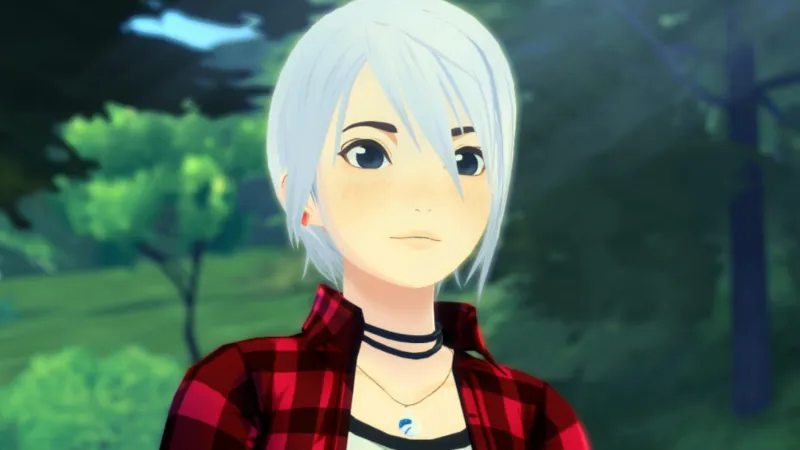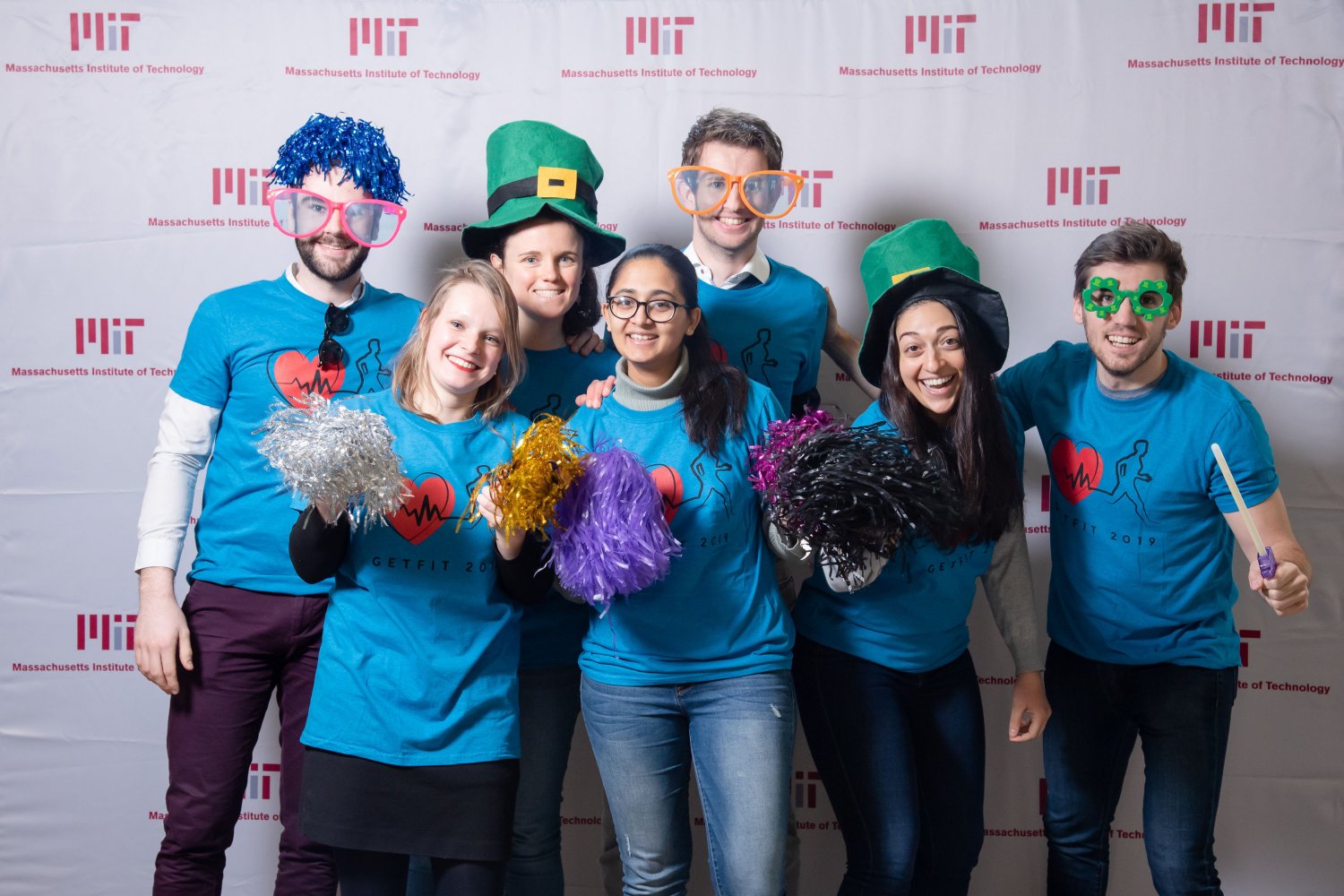Crops – barley seedlings – grow on average 50% more when their root system is stimulated electrically through…
Weekly News for Designers № 726 – Font Pairing Secrets, Developer Experience Free eBook, CSS Gradients Collection
The Complex CSS border-image Property
The CSS border-image property can do some pretty cool stuff once you get your head around how it works.
The Three Secrets to Font Pairing
Pairing fonts is a tricky task that often pops up in discussions about typography challenges, it’s a tough skill to master!
Those Coding Tasks ChatGPT Can’t Do
ChatGPT is great at creating code, but it’s not a replacement for your job. It’s here to assist, not to take over.
Free Geometric Fonts for Designers
From sleek and minimalistic to bold and impactful, you will find a geometric style for every project.
A Practical Introduction to Scroll-Driven Animations
With CSS scroll() and view(), learn how to create scroll animations that toggle shadows.
Developer Experience eBook
Written by Addy Osmani, this free eBook focuses on how developers can make work easy and efficient.
Designer’s Step-By-Step Guide To Redesign
Some practical tips for redesigning, dodging common mistakes, and helping users adapt to the new design.
Tokenami New Atomic CSS Framework 
Arjustings Free Font
A handwritten font so unique it’s downright ugly, but in a way that grabs everyone’s attention.
Chunk Free Icons for Figma
A collection of 600 glyphs, each designed for consistency and frequent use.
CSS Gradients Collection
A stunning collection of copy and paste CSS gradients.
Learning to Appreciate Great Content
What are some ways to truly value excellent content? We’ve got some thoughts to share on this.
58 Rules for Beautiful UI Design
These guidelines are designed to help you create interfaces that are not only visually attractive but also user-friendly.
The Top Pens of 2023 on CodePen
The huge collection of the most hearted Pens from last year.
Learnings From Conducting Over 100 Website Migrations
Starting a website migration? Learn key tips for a smooth and successful transition.
The Best PHP Frameworks of 2023
An extensive review of the best PHP frameworks to use this year.
What is a Chief Innovation Officer? – CyberTalk

EXECUTIVE SUMMARY:
Twenty-five years ago, the Chief Innovation Officer role was virtually unheard of. Now, it’s one of the hottest C-suite roles out there.
These days, roughly 30% of Fortune 500 companies have a Chief Innovation Officer. This includes multi-national conglomerates like Berkshire Hathaway and UnitedHealth Group.
In this article, join us for an in-depth exploration of the Chief Innovation Officer role; from job responsibilities to means of attaining this coveted position.
What is a Chief Innovation Officer?
A Chief Innovation Officer (CIO or CINO) drives change management and innovation for an organization. This role manifested after organizations observed that a fragmented, teams-driven approach to innovation often fails, as it results in competition between teams and minimal long-term achievements.
A Chief Innovation Officer orchestrates change by unifying the push towards greater innovation under a single vision and approach. In some cases, a Chief Innovation Officer may be supported by an innovation team; a dedicated department that assists with identifying opportunities, validating opportunities and making informed investment decisions.
Chief Innovation Officer responsibilities overview
The objectives of a Chief Innovation Officer include persuading executives to entertain innovative, value-add business ideas, and ensuring that the business thrives as change takes effect. In brief, a Chief Innovation Officer needs to:
- Expedite the rate at which new opportunities are identified
- Qualitatively and quantitatively assess the opportunities, zeroing-in on those with the highest potential yields
- Foster leadership alignment around strategy and mission
- Solicit buy-in around new projects and investments
- Assist with bringing new products and services to market that increase business value
Chief Innovation Officer job description in-depth
The precise responsibilities of a Chief Innovation Officer will depend on the context of the role — the industry vertical that it’s situated within, organizational complexity, and an organization’s innovation maturity levels. In more illustrative terms, a Chief Innovation Officer must be able to:
1. Facilitate and inspire innovation. In other words, the Chief Innovation Officer is responsible for fostering a business environment that promotes the creation and circulation of ideas, that encourages collaboration, and that embraces a ‘fail fast, fail forward’ mindset; thereby advocating for ongoing improvement.
In the interest of facilitating and inspiring innovation, the Chief Innovation Officer plays a crucial role in recruiting the right innovation talent, cultivating an innovation-friendly culture, streamlining and enhancing processes and allocating resources to boost innovation speed and maturity.
With a strategic approach, a Chief Innovation Officer can optimize the impact of innovation within the organization.
2. Set up a streamlined, end-to-end process for opportunity identification and validation. This involves developing a strategic focus for innovation, facilitating ideation, optimizing experimentation, and developing results confirmation capabilities, as through efficient tools and processes.
3. Create a culture of innovation. Within the organization, the Chief Innovation Officer must implement new approaches to generate enthusiasm around innovation and to energize employees. In parallel, the individual in this role should aim to encourage a growth mindset, tolerance, openness, psychological safety and a readiness to pursue calculated risks.
To further cultivate a culture of innovation, the Chief Innovation Officer should lead by example; actively participating as an innovator.
4. Implement enterprise-aligned methods and technologies. The right kinds of innovation tools and resources are critical when it comes to advancing the credibility of the team, and enabling employees to innovate effectively and efficiently.
Tools in the ‘Innovation Technology Stack’ may encompass an innovation management platform or an idea management platform, along with collaboration systems, prototyping tools, templates, gamification tools and others.
5. Prioritize projects effectively, shape projects effectively, and make judicious investments in new ideas. In so doing, the CIO/CINO must design a sensible intake procedure and deploy an intelligent project assessment model. These ensure optimal prioritization and a well-balanced innovation portfolio.
6. Evaluate innovation performance. The CIO/CINO needs to create and employ an Innovation Performance Measurement System. This system will serve as a guide amidst the process of continual improvement, providing a metric-based dashboard that helps everyone communicate the ‘State of Innovation’ to the company’s top management.
7. Conduct competitive research in relation to what’s happening within the broader industry ecosystem. The Chief Innovation Officer must then summarize the latest and greatest innovations and conceive of better and stronger approaches.
Common paths to becoming a Chief Innovation Officer
There isn’t a single, universal path that leads to a Chief Innovation Officer role. That said, many Chief Innovation Officers reach the role after having worked in solutions-focused positions. Chief Innovation Officers also typically have several years of past experience in another executive-level position.
Beyond gaining the necessary work experience to pursue the Chief Innovation Officer role, aspiring CIOs/CINOs should consider advancing their academic qualifications. A Doctor of Business Administration, for example, is a terminal degree indicating that someone has reached the pinnacle of academic achievement within their field.
Individuals who hold DBA degrees are often recognized as esteemed experts who have added new knowledge or theories to the current body of knowledge.
How Single-View 3D Reconstruction Works?
Traditionally, models for single-view object reconstruction built on convolutional neural networks have shown remarkable performance in reconstruction tasks. In recent years, single-view 3D reconstruction has emerged as a popular research topic in the AI community. Irrespective of the specific methodology employed, all single-view 3D reconstruction models…
Ioan Iacob, Founder & CEO at FLOWX.ai – Interview Series
Ioan Jacob, is the founder and CEO of FLOWX.AI, a revolutionary AI Application Modernization Platform for enterprise mission-critical applications. It is a modern event-driven platform built on a microservices architecture. It uses the most popular industry standards for process modeling, business rule management and integrates as…
Tackling Hallucination in Large Language Models: A Survey of Cutting-Edge Techniques
Large language models (LLMs) like GPT-4, PaLM, and Llama have unlocked remarkable advances in natural language generation capabilities. However, a persistent challenge limiting their reliability and safe deployment is their tendency to hallucinate – generating content that seems coherent but is factually incorrect or ungrounded from…
Another Code: Recollection Impressions | All Things Nintendo

This week on All Things Nintendo, Brian is joined by Marcus Stewart, who gives his hands-on impressions of Another Code: Recollection, Nintendo’s first published release of 2024. The series got its start on the DS before receiving a Japan and Europe-only sequel on the Wii. Now, both titles are available on Switch. The two also run through the latest news, give an eShop Gem of the Week, and discuss which Zelda game they’d like to see remade.
[embedded content]
If you’d like to follow Brian on social media, you can do so on his Instagram/Threads @BrianPShea or Twitter @BrianPShea. You can follow Marcus on Twitter: @MarcusStewart7.
The All Things Nintendo podcast is a weekly show where we celebrate, discuss, and break down all the latest games, news, and announcements from the industry’s most recognizable name. Each week, Brian is joined by different guests to talk about what’s happening in the world of Nintendo. Along the way, they’ll share personal stories, uncover hidden gems in the eShop, and even look back on the classics we all grew up with. A new episode hits every Friday!
Be sure to subscribe to All Things Nintendo on your favorite podcast platform. The show is available on Apple Podcasts, Spotify, Google Podcasts, and YouTube.
00:00:00 – Introduction
00:00:45 – Pokémon Scarlet & Violet Epilogue
00:13:00 – Switch 2 Release Month Leaked?
00:21:07 – Golden Sun Games Added to Switch GBA Library
00:22:24 – Ace Combat 7 Coming to Switch
00:25:15 – Lunar Lander Beyond New Details
00:30:39 – Another Code: Recollection Impressions
00:49:11 – eShop Gem of the Week: Dicey Dungeons
00:55:26 – Everybody Votes: Which Zelda Game to Remake?
If you’d like to get in touch with the All Things Nintendo podcast, you can email AllThingsNintendo@GameInformer.com, messaging Brian on Instagram (@BrianPShea), or by joining the official Game Informer Discord server. You can do that by linking your Discord account to your Twitch account and subscribing to the Game Informer Twitch channel. From there, find the All Things Nintendo channel under “Community Spaces.”
For Game Informer’s other podcast, be sure to check out The Game Informer Show with hosts Alex Van Aken, Marcus Stewart, and Kyle Hilliard, which covers the weekly happenings of the video game industry!
Getfit, MIT Health’s winter exercise challenge, turns 20 in 2024

“Getfit” isn’t a command, but rather a friendly challenge from MIT Health (formerly MIT Medical) to spend the cold months exercising with a group of people you choose in any way you choose. This year, the popular winter fitness program is celebrating its 20th year. What began as a goal-oriented exercise incentive for MIT Health staff in its pilot year, and expanded in 2005 to the entire MIT community, has now become a cherished tradition for many.
Tom Goodwin, a staff member in MIT Health who has participated every year, states the program’s value succinctly. “Getfit starts when it is cold and dark and ends when it is warm and bright. Forming a team and logging minutes motivates us to get off the couch and move!”
Andrea Porras, a Media Lab affiliate and four-time participant, says, “I look forward to getfit every year because it’s the only thing motivating me to make an extra step in the winter. It’s a fun way to learn more about your co-worker and the sporty activities they participate in. You’d never know who’s into boxing or hockey!”
The getfit challenge continued even during the Covid-19 pandemic, providing an important means of connecting with others during a time of social distancing. It has grown steadily from 1,277 participants in 2005 to 3,385 participants on 501 teams in 2023, logging a total of 12,890,676 exercise minutes. That’s 214,845 hours — or an average of 63.5 hours for each participant — over the three-month period.
Almost any kind of exercise can be counted — walking across campus, climbing stairs, running or swimming, skiing, stretching, even time spent lifting heavy items. Any exercise that gets your heart beating faster than usual, uses your muscles, or increases your flexibility can help to fulfill your weekly exercise-minutes goal and add to your team’s combined minutes, which need to be entered into the getfit website by the following Monday.
Teams of five to eight people can include staff, students, faculty, affiliates, and family members with two co-captains. Each team strives to meet the weekly exercise goals for individuals and teams, starting with 150 minutes in the first week and building up to 300 minutes in week 12. Some team members may complete more minutes than others, at varying degrees of exercise intensity. But as long as each individual meets getfit’s minimum weekly goal, they qualify for that week’s prize drawing for individuals, and teams whose per-member average meets or exceeds the goal are entered in the drawing for weekly team prizes.
“We have been doing the getfit challenge for 17 years and loving it,” says a spokesperson for the MIT Sloan EverReadys, a seven-member team with five faculty members, one affiliate, and one family member. “It gets us going in the middle of winter and continues to motivate us for the whole 12 weeks. Some of us can get over 300 minutes each of the weeks; others barely make the required amount. Nonetheless, there have been a number of times when we had a perfect season, each person making the required amount in each of the 12 weeks. We also think we are probably the oldest gang in town. Our ages range from the 50s to the 90s. ‘Not bad,’ we like to think.”
A grand prize for one randomly drawn team is awarded at the end of the three months. At the end of the challenge, “Onward and Upward” prizes are awarded by random drawing to two individuals who recorded exercise minutes for every week of the challenge and demonstrated a steady and consistent increase in exercise minutes from week to week, even if those minutes didn’t meet each weekly goal set by getfit. This year there will be even more prizes, in celebration of the program’s 20th anniversary.
In addition to the chance to win prizes, all participants on an active team can receive a free getfit T-shirt — a special 20th anniversary version this year — and can take advantage of other free or discounted services, such as a special four-month access pass to MIT Recreation and a free 30-day membership on the exercise app CardioCast.
But for many people, bonding with teammates is a more powerful incentive than winning prizes.
“For me, the social aspect was most useful,” says Josh Bradshaw, the family member of a graduate student. “Seeing my friends getting out there and pushing up their scores was a helpful nudge to do a little bit more myself … After taking up running during getfit, I ramped up my weekly volume and eventually ran the Philadelphia Marathon in the fall.”
The program often helps create new exercise momentum for people, such as Shellyann Isaac, from the Undergraduate Advising Center, who will be a 20-year participant this year. She began the program trying not to disappoint her teammates, but over the years, she says, “I worked out to not disappoint myself.”
“Getfit is my annual reminder to check in on my health, both mental and physical,” says Brian Bryson of MIT Technology Review. “It’s a great reflection point that sets the tone for the rest of the year.”
Registration for getfit 2024 runs through Jan. 23. The challenge begins Monday, Jan. 29 and ends Sunday, April 21. More information can be found at getfit.mit.edu.
Singapore’s Draft Framework for GenAI Governance
Explore Singapore’s new draft governance framework for GenAI, addressing emerging challenges in AI usage, content provenance, and security….
